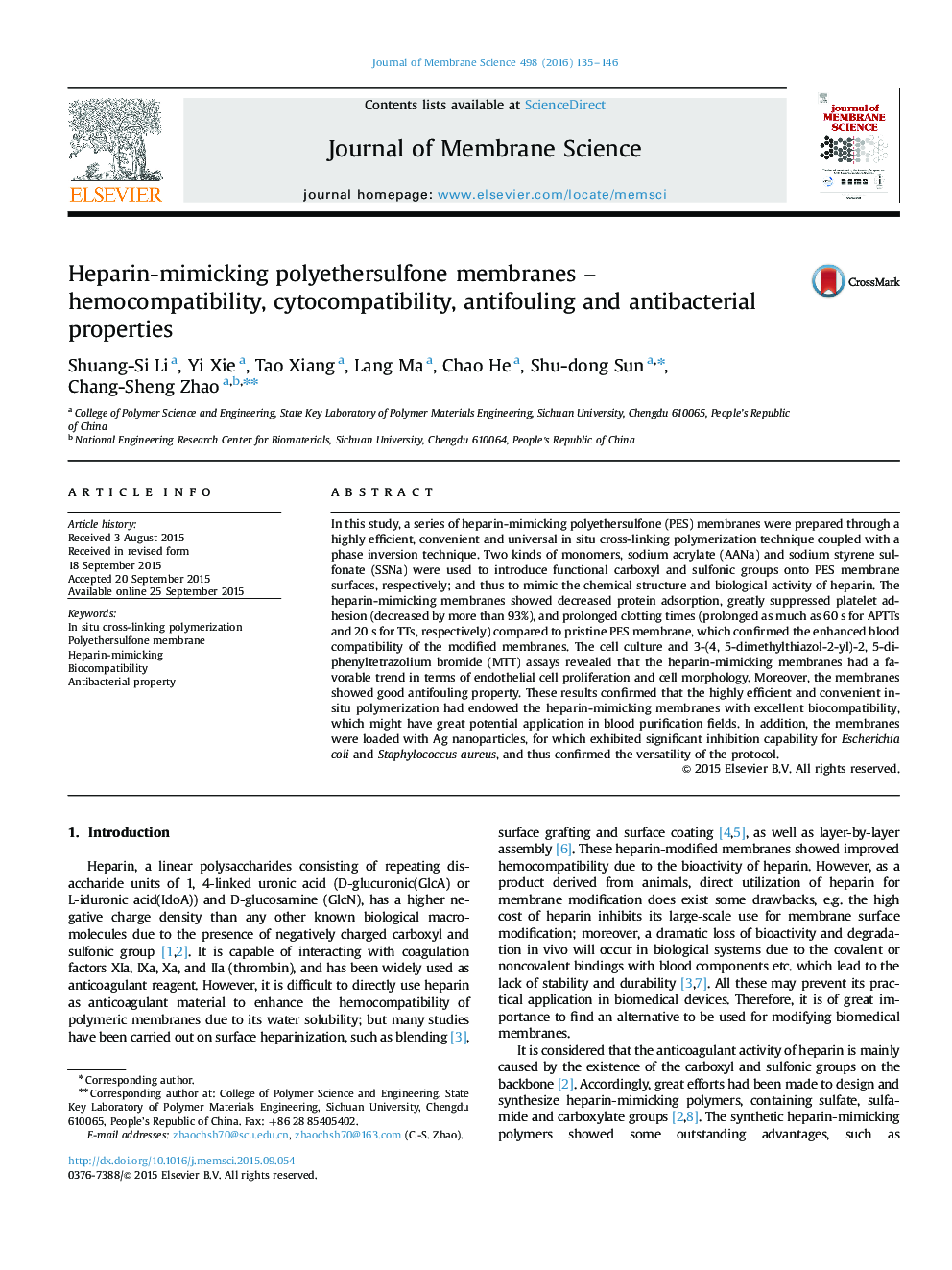| Article ID | Journal | Published Year | Pages | File Type |
|---|---|---|---|---|
| 632814 | Journal of Membrane Science | 2016 | 12 Pages |
Abstract
In this study, a series of heparin-mimicking polyethersulfone (PES) membranes were prepared through a highly efficient, convenient and universal in situ cross-linking polymerization technique coupled with a phase inversion technique. Two kinds of monomers, sodium acrylate (AANa) and sodium styrene sulfonate (SSNa) were used to introduce functional carboxyl and sulfonic groups onto PES membrane surfaces, respectively; and thus to mimic the chemical structure and biological activity of heparin. The heparin-mimicking membranes showed decreased protein adsorption, greatly suppressed platelet adhesion (decreased by more than 93%), and prolonged clotting times (prolonged as much as 60Â s for APTTs and 20Â s for TTs, respectively) compared to pristine PES membrane, which confirmed the enhanced blood compatibility of the modified membranes. The cell culture and 3-(4, 5-dimethylthiazol-2-yl)-2, 5-diphenyltetrazolium bromide (MTT) assays revealed that the heparin-mimicking membranes had a favorable trend in terms of endothelial cell proliferation and cell morphology. Moreover, the membranes showed good antifouling property. These results confirmed that the highly efficient and convenient in-situ polymerization had endowed the heparin-mimicking membranes with excellent biocompatibility, which might have great potential application in blood purification fields. In addition, the membranes were loaded with Ag nanoparticles, for which exhibited significant inhibition capability for Escherichia coli and Staphylococcus aureus, and thus confirmed the versatility of the protocol.
Related Topics
Physical Sciences and Engineering
Chemical Engineering
Filtration and Separation
Authors
Shuang-Si Li, Yi Xie, Tao Xiang, Lang Ma, Chao He, Shu-dong Sun, Chang-Sheng Zhao,
